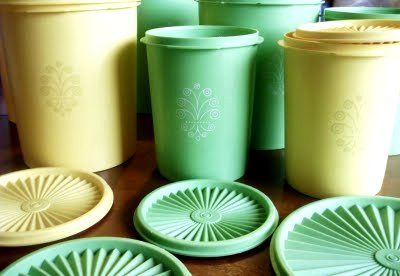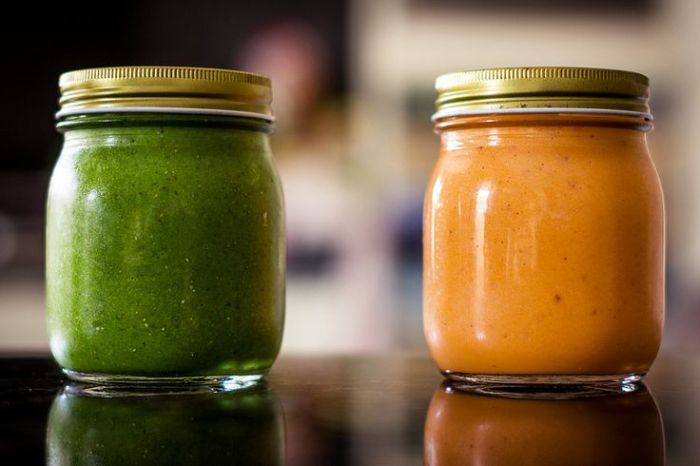Kitchen Detox: Why BPA-Free Plastic May Be Dangerous
After our beloved non-stick Teflon pan starting peeling (ugh), I had no problem shelling out for stainless steel, Teflon-free wok. (It’s huge, silver, and glorious.) The EWG reports that polytetrafluoroetheylene (PTFE, a.k.a. Teflon), a synthetic polymer responsible for non-stick surfaces, releases unhealthy fumes when heated at high temps. These fumes are toxic to pet birds and can cause flu-like symptoms in humans. No, thank you.
This purchase launched a mini-investigation into the rest of our kitchenware. Natural dish detergent? Check. Unbleached coffee filters? Check. Safe Tupperware? …er….
Like many of the belongings I share with my fiancé, our food container collection is a mélange stuff from me, stuff from him, stuff people have given us, and various repurposed items. It’s impossible to organize—stackability is a faraway dream.
Also, most of it is plastic. And most of that plastic is BPA-free. Call me a hippie, but I just had a feeling that even this new, health-conscious plastic wasn’t ideal. Or maybe I just have a love affair with glass. So timeless!
Anyway, my hunch wasn’t too left field. This Mother Jones article articulates why BPA-free plastic may be just as harmful (if not more so) than old-school plastic containing BPA. I was also troubled (but not surprised) to learn of the campaign launched by Big Plastic to sweep these new findings about the dangers BPA-free plastic under the rug.
But what is BPA in the first place?
BPA stands for Bisphenol A, a synthetic, carbon-based compounded used in tough, clear plastic (like food containers and water bottles) and epoxy resins (cans used for canned food are often lined with a BPA-containing resin), among other things.
BPA can seep into food, especially if the food is heating in a BPA-containing plastic container. Placing these containers in the dishwasher can also cause the plastic to break down and leech more BPA. Here’s the scary part: BPA acts like estrogen, making it a xenoestrogen (an endocrine-disrupting estrogen-mimicking chemical that we encounter via environmental exposure). Xenoestrogens can cause a host of health issues in both women and men. Indeed, excess estrogen exposure is linked to increased risk of breast cancer, estrogen dominance, infertility, and low sperm count. And those are only a few of the potential risks.
As you may have noticed, BPA-free plastic is available just about anywhere, and it appears that this new, purportedly healthier plastic is in the process of replacing traditional plastic. This would be a great thing—an example of health consciousness winning in the free market—but it turns out that we may we swapping one devil for another.
Here’s the grim news from an Environmental Health Perspectives report:
“Almost all commercially available plastic products we sampled—independent of the type of resin, product, or retail source—leached chemicals having reliably detectable EA [Estrogenic Activity] including those advertised as BPA free. In some cases, BPA-free products released chemicals having more EA than did BPA-containing products.” Yikes.
Thus, my new kitchen project has begun: Replacing our plastic food containers with glass ones, starting with the most dilapidated of our Tupperware (why do we still have some of those things?)
If you’d like to jump on board and detox your kitchen but you’re budget-minded like me, here are a few ways to proceed:
1. Hang on to glass jars that once contained nut butters, jams, or some other lovely thing you recently devoured. Wash them out well, remove the label, and you have yourself a new container.
2. Go shabby chic. Or hipster. Or whatever. I know mason jars are becoming a cliché, but they are pretty affordable and seriously handy. Mason jars are perfect for storing nuts, dried fruit, gluten-free flours—or anything from the bulk section. A pack of 12 wide-mouth 32 oz. mason jars sells for less than $20 on Amazon.
3. Make a list of the food container sizes and shapes that you need, and then go shopping for glass Tupperware. Also, be mindful that several glass containers have plastic lids. Better than all plastic, but I’m not really feeling these. Rather, I have my eye on these stackable beauties.
4. You don’t have to do your plastic purge immediately. A few glass-for-plastic exchanges a week is a great way to start.
Do you have any tips for detoxing your kitchen?
More tips on greening your home: Washing Laundry with Soap Nuts
All Natural Ways to Clean Your Home
What You Need to Know About Fluoride
Photos: Two Pink Possums via Flickr, Daniel Lee via Flickr






